LNG Industry Success has become a focal point in global energy discussions, as companies prioritize safety and innovation. Recent advancements in safety measures have significantly mitigated risks associated with liquefied natural gas transport and storage. Notably, countries like Indonesia and Malaysia have emerged as leaders, contributing to the industry’s growth and enhancing their economic standings.
Projects from Bontang to Bintulu are testament to strategic investments that yield dividends over time. The emphasis on a safety-first approach not only protects communities but also ensures a stable energy supply for the future. Overall, the LNG sector is poised for continued success as it captivates investors and stakeholders worldwide.
Escort tugs boost LNG port safety
Research into what LNG terminals require of their tugs has resulted in a breed of vessels with superior escort and seakeeping capabilities.
In the operational cycle of an LNG carrier, vessels face the greatest level of risk at the ship/shore interface. It is here where gas ships come into close proximity with other port traffic and where the chances of a grounding or collision incident are at their highest. The ship/shore interface begins in the port approaches, when the LNG carrier takes on a pilot and begins the final leg of its voyage. The passage towards the terminal berth is carried out at a preagreed speed and with an exclusion zone in force around the vessel.
The other essential element of the LNG carrier berth approach is the tug escort. Escort tugs were deemed to be an eminently sensible safety measure for oil tankers navigating confined waters following the grounding of the crude oil carrier Exxon Valdez in Alaska’s Prince William Sound in March 1989.
The concept was quickly taken up for the large number of new LNG terminals that were built in the 1990s and into the early years of the new century. The safety role of the escort tug is particularly important for LNG terminals as most such facilities are located outside inner harbour areas, often at exposed locations where fairly significant sea states may prevail.
An increasing number of LNG importers are specifying floating storage and regasification units (FSRUs) as a means of fast-tracking LNG purchases at much lower cost than the shore receiving terminal option. Such FSRUs also tend to be placed on jetties in exposed locations and in some cases are moored to turret buoys in deep water at true offshore sites.
Another factor in the escort tug equation is ship size. LNG carriers have high freeboards and their overall size has been increasing in recent years, in tandem with the growth of the LNG industry, the expanding network of export and import terminals worldwide and the drive for economies of scale. «Conventional size» LNGCs ordered 30 years ago were commonly of 125 000 m3, whereas today cargo-carrying capacities of 170 000 m3 are usually specified.
The combination of large LNG carriers and terminals at exposed locations calls for escort tugs with exceptional capabilities. LNG carrier owners and terminal operators will typically ask tug operators, «Can you provide tugs that will safely bring the LNG carrier alongside and berth it in sea states with a significant wave height of up to a 3 m?»
The goal of providing escort tugs that are fit for purpose was greatly facilitated by the SAFETUG joint industry project (JIP) coordinated by Marin in the Netherlands and supported by oil and gas companies, tug owners, major equipment suppliers and a few consulting naval architects.
Completed in 2010, the two-phase, five-year SAFETUG study provided the participants, by means of model testing, computational fluid dynamics (CFD) analyses and related research, with the basic tools to enable a reasonable prediction of the «operability» of tugs in a specified sea state condition.
Although the experience of the tug master remains the key factor in safe operations, the JIP established a level of understanding that has allowed the design of better, safer and more capable tugs for hostile environments. One conclusion of SAFETUG was that attempting to handle the escorting of ships in conditions with significant wave heights greater than 3 m is not likely to be successful, at least not with current tug designs.
In a typical escort tug operation at an LNG terminal the arriving LNG carrier will be joined by four tugs in the outer port approaches. One of the quartet will be tethered to the stern of the gas ship and this vessel will be able to exert a braking or steering force in case of an emergency such as the LNGC losing power while en route. The escort tugs must be able to maintain a speed that enables the Gas Carrier Sector: A Comprehensive Update on Trade, Fleet, and Efficiencygas carrier to continue at its port approach speed of up to 10–12 knots.
Two principal escort tug design concepts have been developed. The first is the high-performance, «skeg-forward» Voith tug while the second is the azimuthing stern drive (ASD), or Z-drive, escort tug with indirect towing capability. Following a rapid evolution in design, modern ASD tugs are able to generate significant indirect steering forces and thus provide a performance which is directly comparable to that of a Voith tug.
The latest ASD tugs make use of hull forms that are much improved on those of the early tugs of this type and they are also fitted with large «escort skegs». These design features, combined with a better understanding of the physics of escort operations, have proven that a properly designed ASD tug can fulfil all the requirements of a «true» escort tug.
One naval architect firm that has devoted considerable effort to developing a range of effective ASD escort tug designs is Robert Allan Ltd of Vancouver on Canada’s west coast. As part of the process, the company developed its own model testing programme, the initial focus being aimed solely at evaluating the hull characteristics that achieved the highest indirect forces. The Robert Allan research evaluated tug performance as a function of a range of design parameters, including:
- basic hull geometry and proportions;
- sloped hull sides;
- sponsoned hull sides;
- skeg geometries and positions and tow-point position.
The company’s investigations into optimised escort tug hull forms resulted in the development of the company’s RAstar class vessels. This series now includes tugs from 27 to 39 m in length, with bollard pulls (BPs) ranging from 70 to 120 tonnes. These designs have proven successful in numerous offshore/exposed terminal applications, particularly at LNG terminals.
For example, there are four RAstar 3 600 tugs in operation for Smit Lamnalco at the Balhaf export terminal of Yemen LNG, each with a BPs of 90 tonnes, while Svitzer has six RAstar tugs in service at Milford Haven in South Wales, where Dragon LNG and South Hook LNG both operate receiving terminals. The Milford Haven complement comprises four RAstar 3400 tugs, each with an 80-tonne BP, a 90-tonne BP RAstar 3600 tug and a 105-tonne BP RAstar 3900 vessel.
The most notable difference between typical harbour operations and those at offshore/exposed terminal locations is in the type of deck machinery, particularly the design of the main hawser winches. While there are a few tugs in harbour operations which have winches with a degree of «render/recover» capability, it is essential to have this attribute in offshore applications. This is because wave-induced loads in the towline can easily exceed typical line breaking strengths, even with large margins in safe working loads.
A rather extreme example of this render/recover capability can be found on the tugs developed for operation at the Costa Azul LNG terminal on Mexico’s Pacific Coast. The tugs are operated by Servicios Marítimos de Baja California of Mexico, a joint venture between Moran Towing and the Boluda group.
Because the terminal is located on a lee shore in an area exposed to Pacific swells, the owner’s specification demanded that each tug and its winch must be able to sustain a constant line pull of 75 tonnes throughout the entire terminal approach in a 2 m-plus significant swell. Markey Machinery of Seattle, Washington designed the 520 kW, double-drum winch with Asymmetric Render/Recover™ capability fitted on the four Costa Azul tugs. The winches are able to achieve the constant tension requirement in sea conditions with wave heights of up to 3 m.
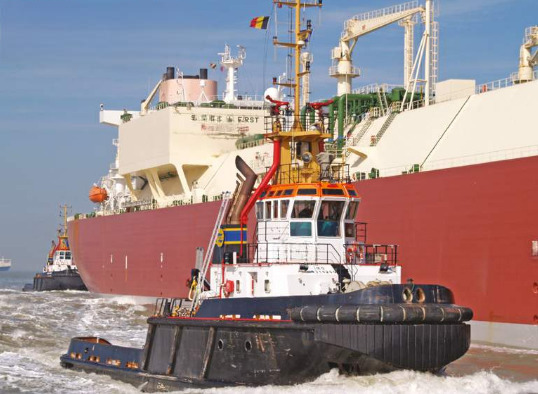
In common with many sectors of the shipping industry, the drive to reduce fuel consumption and harmful atmospheric emissions is also impacting the tug market, for both harbour and offshore applications. The load profile of an offshore terminal tug, with more extended use of higher power levels, can place such vessels in a more favourable position as regards early recovery of investments in hybrid or similar power configurations.
Over the past year the LNG power option has made a breakthrough in the escort tug sector. Buksér og Berging of Norway has recently put two LNG-fuelled tugs, Borgøy and Bokn, into service at the Kårstø gas terminal on the country’s southwestern coast. Built by the Sanmar yard in Turkey, the vessels are on charter to Statoil and in service at a terminal that handles a larger volume of LPG and ethane tanker shipping than any other port in Europe. Each of the pair is powered by two Rolls-Royce Bergen lean-burn gas engines fuelled solely by LNG.
China State Shipbuilding’s Huangpu yard is also building two LNG-fuelled escort tugs, each powered by twin Wärtsilä 34DF dual-fuel engines. The duo have been constructed for the stateowned China National Offshore Oil Corp (CNOOC) and for operation at the new Zhuhai LNG import terminal on the western flank of the Pearl River Delta.
Sterling results from safety-first focus
The LNG shipping industry has built up an exemplary safety record over its 50-year history, and those few incidents that do occur provide valuable lessons.
In the 50 years since they loaded their first commercial shipment, LNG carriers have safely delivered over 77 000 cargoes. These consignments all reached their destinations with no breach of a cargo containment system and with no onboard fatalities directly attributable to the cargo. This is a very impressive, in fact unprecedented, safety record for the carriage of liquid hydrocarbons by sea in bulk.
This exemplary safety record is due to several reasons. These include:
- but are not limited to, a strong, overarching safety philosophy;
- robust equipment and systems design;
- good operational and maintenance procedures;
- operating in excess of the minimum requirements and according to best practice guidelines;
- and high standards of training coupled with competency verification.
Amongst other factors that have contributed to LNG shipping’s remarkable safety record is the fact that the International Gas Carrier (IGC) Code was developed based on actual experiences in the early days of LNG transport and our industry’s ability to share lessons learnt and to develop universally accepted best practices.
Credit also needs to be given to the pioneers who contributed first to the development of design standards and operating procedures during the early days of Regulations and Guidance for Liquefied Natural Gas Shippingliquefied gas shipping and then to the development of the IGC Code, with its safety margins and safe design provisions. They played a key role in laying the foundation stones on which the industry’s excellent safety performance has been built.
The pioneering cargo of LNG was carried across the Atlantic Ocean by the 5 000 m3 Methane Pioneer at the start of a series of trial shipments in 1959. By 1964 the first purpose-built LNG carriers, the 27 400 m3 Methane Princess and Methane Progress, were in service under a 15-year gas purchase agreement signed by the UK and Algeria.
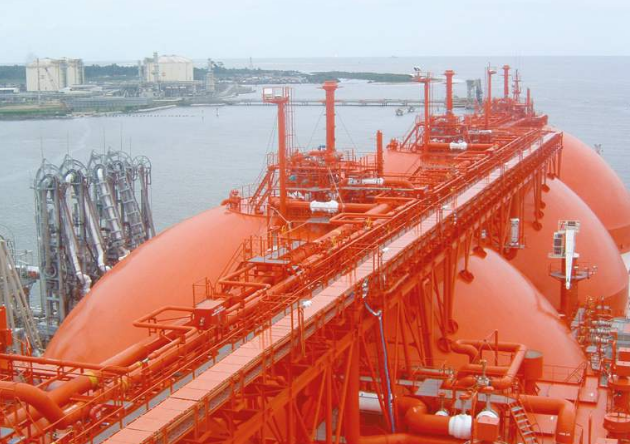
Since the early days of LNG transportation, there have been many changes to the industry. LNG vessel size has increased considerably, especially since the start of the new millennium. Whereas the average cargo-carrying capacity of a conventional LNG carrier was 125 000 m3 up to the mid-1990s, it has been moving steadily upwards since then and such newbuildings now fall in the 160 000–175 000 m3 size range.
The LNG carrier fleet also includes 31 Q-flex ships of 216 000 m3 and 14 Q-max vessels of 266 000 m3. These gas carriers were ordered a decade ago to help Qatar realise economy-of-scale benefits in shipping its cargoes to world markets. They remain by ar the largest LNG carriers trading today.
Fleet growth has also picked up a head of steam over the past decade. The number of LNG carriers in the current fleet reached the 400-ship milestone in April 2014. With over 125 such vessels on order, the 500-ship mark is due to be attained in late 2016. The industry’s record of achievement in terms of fleet growth is made all the more notable by the fact that it was not until 1997 that the LNG carrier fleet reached the 100-ship landmark.
LNG carriers are also amongst the most durable of all ships. Several have successfully traded up to and beyond their 40th year. In 2013 approximately 10 percent of the LNG carrier fleet was in excess of 30 years of age. Due to the industry’s requirement for a safe and reliable performance, rigorous maintenance routines and good housekeeping practices are given top priority on these high-value vessels.
Some older vessels have been converted into floating storage and regasification units (FSRUs), a modification which effectively gives the vessel a new lease of life. In addition a contract has recently been signed under which a 1975-built LNGC will be converted into a floating LNG production (FLNG) vessel. As a result of FSRU and FLNG conversions, it will not be long before some LNG ships go beyond 50 years of active service.
In the delivery of 77 000 cargoes some minor incidents and near misses have occurred within the overall fleet. The Society of International Gas Tanker and Terminal Operators (SIGTTO) maintains a highly detailed database of incidents which have taken place onboard LNG vessels and within terminals. The data is analysed in the drive to identify causes and minimise the risk of recurrences.
Incidents to date have mainly involved problems with machinery and cargo-handling systems and equipment. The machinery incidents include loss of propulsion and other system failures and blackouts. Most of the cargo-handling incidents have occurred at the ship/shore interface, especially during connection and disconnection of the marine loading arms on the jetty.
LNG carriers have also been involved in three high-speed grounding incidents. Although the vessels suffered substantial bottom damage as a result of the groundings, in no case was a cargo containment system breached. There have also been other LNGC groundings in port areas when the vessels were proceeding at slower speeds. Again, containment systems have remained intact in each of these occurrences.
LNGCs have also been involved in a few collision incidents, including two in the last 18 months. In the first a Q-flex LNG carrier and a container ship collided in the Singapore Straits and in the second an LPG carrier and an LNG carrier came together in Tokyo Bay. Methane Princess, the first LNG carrier in commercial service, was struck by the vessel Tower Princess while berthed at the Canvey Island terminal in the UK and the impact necessitated repairs to the gas carrier’s side shell. In another well-known incident Norman Lady, while proceeding through the Strait of Gibraltar, was, almost unbelievably, struck by a US Navy submarine as it rose to periscope depth.
As was the case with the grounding incidents, no LNG carrier containment system was compromised as a result of the collisions. This achievement is a legacy of the extra safety margins and safe separation distances built into the original rules governing the design of these vessels by the LNG shipping industry’s founding fathers mentioned above.
As regards LNG terminals the most serious accident was the explosion that destroyed three of the six liquefaction trains at the Skikda export terminal in Algeria in 2004. The explosion occurred during a routine boiler maintenance operation and was due to insufficient purging of the boiler. Some 26 workers were killed by the blast and 74 injured. As with all incidents in the LNG sector, detailed investigations were carried out and remedial measures introduced. In this case new plant designs eliminated the need for boilers, which have been replaced with more efficient gas-fuelled turbines and compressors.
The LNG industry continues to expand and introduce new technologies. Larger ships with new types of propulsion system are now in service and the fleet continues to grow apace. FSRUs are also now part of the industry and FLNG vessels are about to be. All these advances ensure that there are many challenges in the liquefied gas shipping and terminal industry today.
Not least of these challenges is the supply of ship crews, shore support staff and trainers to provide the required number of trained and competent staff needed in an era of unprecedented growth.
In respect of training, the SIGTTO competency standards for crews onboard both LNG and LPG vessels have become the industry best practice recommendation. The standards provide operators with guidance as to the specific competencies each individual should possess before serving in that rank. These standards are above and beyond the minimum requirements of IMO’s Standards of Training Certification and Watchkeeping (STCW) Convention. There is similar competency guidance available for terminal operators and their staff.
Educating the public is extremely important for liquefied gas shipping, and the public needs to be made aware that gas carriers are not the «floating bombs» that some scare-mongerers portray them to be. Public perception is often that an incident on a gas carrier will result in a huge explosion that may harm people and property in the vicinity. The public needs to learn that these vessels are robust ships, soundly designed and constructed and well equipped with The Evolution of LNG Importer Cooperation – Partnerships, Safety, and Future Directionssafety and emergency systems.
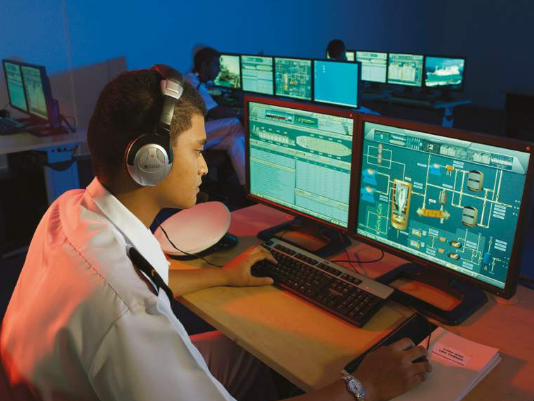
The public also needs to be aware that catastrophic events caused by hydrocarbon gases in the liquid phase are few. As an example, in a fire accident scenario refrigerated Preparation, Operations, and Considerations of Liquefied Gas Tanks Aerationliquefied gas tanks can burn until the fuel they contain is consumed but they are highly unlikely to explode.
Liquefied gas cargo-handling procedures can be complex and the cargo itself is potentially hazardous. For these reasons, personnel operating gas carriers and gas berths require a thorough understanding of ship and shore equipment and cargo properties. They need to have available good operating procedures so as to avoid accidents, and emergency plans should be in place in case an accident does occur.
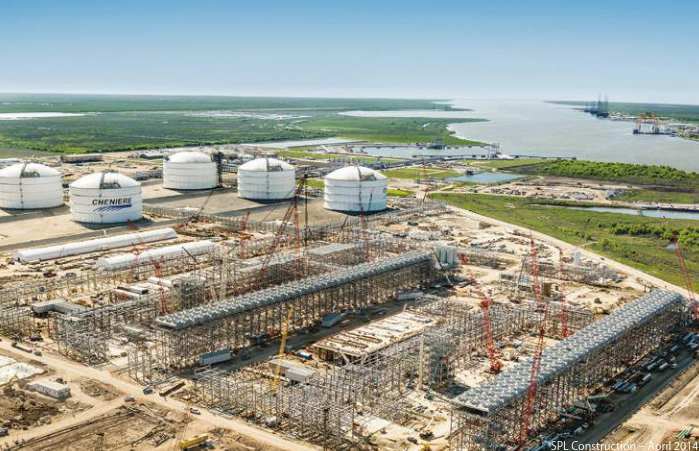
- ~1 000 acres in Cameron Parish, Louisiana.
- 40 ft. ship channel; 3,7 miles from coast.
- 2 berths and 4 dedicated tugs.
- 5 LNG storage tanks, 160 000 m3 each (~17 Bcfe total).
- 6 liquefaction trains, ~27 mtpa total.
- ConocoPhillips Optimized Cascade® Process.
LNG is increasingly being carried as a cargo at sea in ISO containers on conventional container ships and the use of LNG as a marine fuel also brings with it new risks and fresh challenges. A robust safety regime has been established and it is incumbent upon the shipping industry to make appropriate use of it, and, where necessary, adapt it to suit particular circumstances.
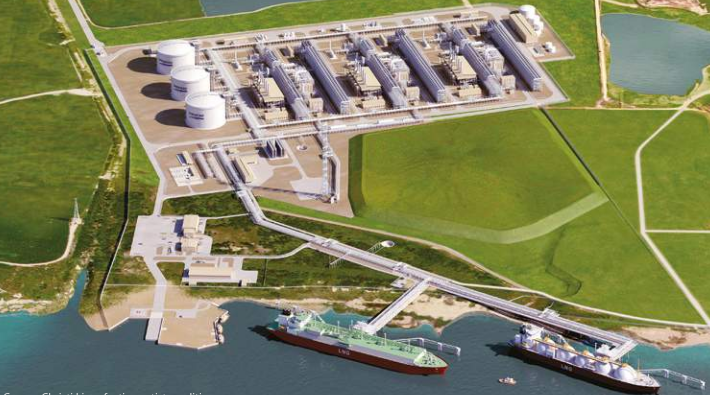
We look forward to celebrating 50 years of commercial LNG shipping in October 2014 and also, in the same month, 35 years of SIGTTO. We also look forward to this very responsible industry continuing to ensure the safe transportation of liquefied gases by sea.
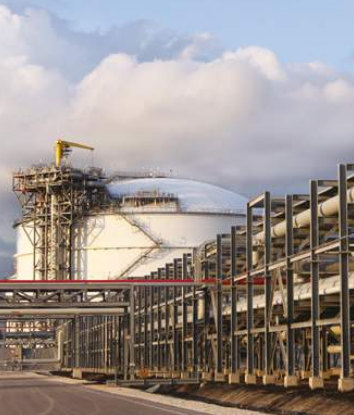
Little Das Island makes a big LNG contribution
Located on a small, remote Gulf island, Abu Dhabi’s 37-year-old terminal was the first LNG export complex to be built in the Middle East.
In the early 1960s Sheikh Zayad Bin Sultan Al Nahyan, president of the United Arab Emirates and ruler of Abu Dhabi, and Sheikh Khalifa Bin Zayad Al Nahyan, the Abu Dhabi crown prince, decided that something needed to be done to halt the wasteful flaring of the associated gas that came with the country’s rising oil production. They issued directives which called for the valuable gas to be captured and marketed.
The leadership’s aspirations were fulfilled on 29 April 1977, when the 125 000 m3 Hilli departed Das Island with the country’s inaugural LNG cargo, bound for Japan. Hilli successfully discharged the shipment at the Sodegaura import terminal in Tokyo Bay on 14 May 1977. The LNG project helped bring the flaring of associated gas to an end.
Das Island is a small piece of land in the Gulf, 160 km northwest of Abu Dhabi City, and its LNG plant is the first to be built in the Middle East. Covering only 2,5 km2 in the late 1960s, the island’s footprint has been augmented with further tranches of reclaimed land over the years, parts of which have enabled the expansion of the liquefaction facilities and LNG storage capacity.
In 1972 Abu Dhabi National Oil Company (ADNOC) finalised a sales and purchase agreement (SPA) with Tokyo Electric Power Company (TEPCO) covering the delivery of 2 million tonnes per annum (mta) of LNG and 800 000 tonnes per annum (tpa) of LPG for 20 years. The following year Abu Dhabi Gas Liquefaction Company (ADGAS) was established to own and operate the Das Island LNG plant. The participants in this joint venture company are ADNOC, Mitsui, BP and Total.
Three ships were built to service the Abu Dhabi project, all owned by Gotaas-Larsen Shipping. Hilli was delivered by Moss Rosenberg Verft of Stavanger, Norway, in December 1975 while sisterships Gimi and Khannur followed in June and July 1976, respectively. Each vessel sported six Moss spherical cargo tanks.
The trio was joined by a fourth vessel, the 1973-built, 88 000 m3, spherical tank Norman Lady, which was owned by a Buries Markes/Leif Höegh joint venture. The fleet was chartered to Liquid Gas Shipping Company (LGSC), a firm that had been established to handle the carriage of Abu Dhabi LNG to Japan under a 20-year contract. LGSC itself was a joint venture, comprising BP, Compagnie Française des Pétroles (CFP), Mitsui and Bridgestone Liquefied Gas.
In 1980 another Gotaas-Larsen vessel of the Moss spherical tank type, the 126 000 m3 Golar Freeze, joined the original quartet under a 15-year charter. Golar Freeze was completed at Howaldtswerke Deutsche Werft in Kiel, Germany, in February 1977.
In October 1990 ADNOC and TEPCO signed another SPAs under which ADGAS would double its production and the Japanese would purchase the additional LNG cargoes for a further 25 years, from 1994. At this point ADGAS placed a contract for the construction of a third liquefaction train on Das Island as well as orders for eight new LNG carriers, with four to be built in Japan and four in Finland. The newbuildings were to replace the older ships on the route.
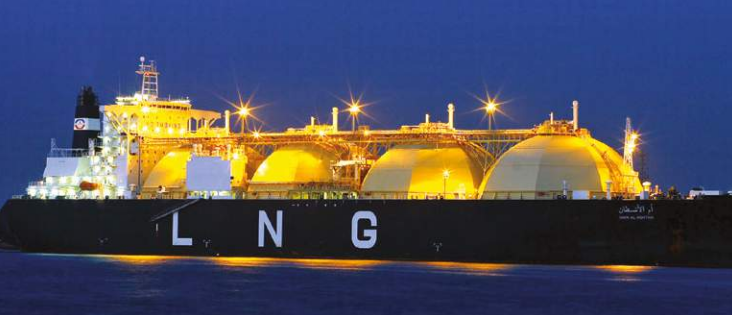
The four 137 500 m3 ships built in Japan were designed with five Moss spherical cargo tanks, and the construction was shared between three yards. As the lead yard, Mitsui Engineering and Shipbuilding in Chiba built the first and third ships, Al Khaznah and Ghasha. Kawasaki Heavy Industries in Sakaide constructed Shahamah, the second ship, while the final ship, Ish, was completed by the Nagasaki yard of Mitsubishi Heavy Industries. Al Khaznah loaded its first cargo at Das Island in August 1994.
The Finnish quartet were built at the new Kvaerner Masa-Yards shipbuilding facility in Turku. Each 135 000 m3 in capacity, they were the first LNGCs to be built in Finland and amongst the first to incorporate a four Moss spherical cargo tank arrangement. The first pair, Mubaraz and Mraweh, were delivered in January and June 1996, while the final two, Al Hamra and Umm Al Ashtan, were completed in January and May 1997. The eight newest ships are managed by Abu Dhabi’s National Gas Shipping Company (NGSCO).
All 13 ships that have been and are being used on the Das Island to Tokyo Bay run to serve the ADNOC/TEPCO agreements have had Moss spherical tanks. Furthermore they have fulfilled all their delivery obligations admirably, without any major interruptions.
Bontang and Arun put Indonesia on the LNG map
Indonesia fast-tracked development of its gas fields and the construction of two major terminals to become the world’s leading LNG export nation.
Indonesia despatched its first LNG cargo, from the Bontang plant in East Kalimantan to the Senboku 2 terminal in Japan for Osaka Gas, in August 1977. This shipment, onboard LNG Aquarius, was made only five and one-half years after the discovery of gas in the nearby Badak gas field. The country’s second LNG plant, at Arun in northern Sumatra, opened for business in October 1978, again with an inaugural cargo to Japan.
Pertamina, the Indonesian state oil and gas company, had signed long-term gas sale and purchase agreements with Japanese electricity and gas utility companies in December 1973 to initiate the country’s involvement with LNG. Four new import terminals were built in Japan for this new trade. The Senboku 2 terminal served Osaka Gas and Kansai Electric, Chita was for Chubu Electric and Tobata was for Kyushu Electric, while Nippon Steel and Kansai Electric made use of the new Himeji facility.
Pertamina and Burmah Gas Transport signed a 20-year transport contract for this trade in September 1973, following which Burmah placed an order for seven 125 000 m3 LNG carriers at the General Dynamics Quincy shipyard in Massachusetts. The ships, known as the LNG Aquarius series after the lead vessel, had five Moss spherical cargo tanks each. LNG Aquarius was the first purpose-built LNGC to be delivered from a US yard. All seven ships were US-manned and flagged and were operated by Energy Transportation Corp.
In 1981 Pertamina and the Japanese utilities signed an extension to the 1973 supply contract. This spurred orders for seven additional Moss LNGCs of 125 000 m3 at three Japanese shipyards. The ships were delivered between August 1983 and April 1985 and were the first Japanese-flag LNGCs. Kawasaki Heavy Industries (KHI) built Bishu Maru and Kotawaka Maru. Mitsubishi Heavy Industries (MHI) completed the trio of Banshu Maru, Echigo Maru and Dewa Maru, while Mitsui Engineering and Shipbuilding (MES) handed over Senshu Maru and Wakaba Maru.
The ships were owned by various consortia of Japanese companies, all of whom were to become major players in the carriage of Japanese LNG imports during the years that followed. Ownership of the vessels was shared between:
- Japan Line;
- K Line;
- Mitsui OSK Lines (MOL);
- NYK;
- Showa Line and YS Line.
Two new operating companies were formed to serve each of the Indonesian terminals; Badak LNG Transport had three ships in its fleet and Arun LNG Transport four.
The new phase of the Indonesia-Japan trade began in August 1983 when Bishu Maru delivered a cargo from the Bontang terminal to Chita for Chubu Electric Power. In the following month Echigo Maru loaded its first cargo at the Arun plant for delivery to Niigata on behalf of Tohoku Electric Power.
Read also: Public awareness and concerns about LNG
Pertamina and Korea Gas Corp (Kogas) signed an LNG supply contract in 1983. Upon completion of Korea’s first import terminal, at Pyeong Taek, Kogas began importing LNG from Indonesia in 1986. The inaugural Korean cargo arrived onboard the 129 000 m3, Moss spherical tank Golar Spirit. Completed by KHI in September 1981, the ship was the first LNG carrier to be built in Japan.
In March 1987 Pertamina and Chinese Petroleum Corp (CPC) signed an LNG supply contract covering the delivery of 1,5 million tonnes per annum (mta) of Indonesian LNG to CPC and Taiwan Power for 20 years from 1990. To fulfil this contract a 137 000 m3 LNGC was ordered at MHI in Japan. Ekaputra was delivered in January 1990 to Cometco Shipping, a joint venture between Mitsui OSK and Indonesia’s PT Humpuss Group.
The smallest LNGC built with Moss spherical cargo tanks, the 19 100 m3 Surya Aki, opened up a new trade from Indonesia to smaller receiving terminals in Japan in 1996. In February that year the three-tank ship was delivered by KHI’s Sakaide yard to MCGC International in fulfilment of a supply contract signed by Pertamina and MOL on behalf of several small Japanese gas companies. Surya Aki transported LNG from Bontang to the Hatsukaichi terminal for Hiroshima Gas, to Kagoshima for Nippon Gas and to Senboku for Osaka Gas.
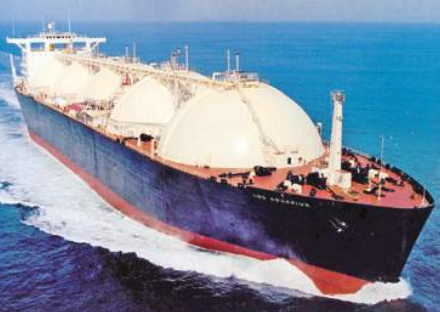
In their heyday Bontang’s eight liquefaction trains and Arun’s six provided Indonesia with a clear lead at the top of the LNG exporters league table. However, dwindling gas supplies have meant that output at both facilities has been on the decline over the past decade. Although a third LNG export terminal, at Tangguh, was brought onstream in 2009 and two medium-scale liquefaction plants are now under construction in Sulawesi, this new capacity does not match the extent to which output from Bontang and Arun has been shrinking.
Ironically LNG is poised to play an even greater role in the country’s energy mix in the years ahead. Several LNG receiving terminals are being built to enable the delivery of gas to the archipelago’s diverse population and industrial centres. One of the receiving terminals is Arun, which is being reconfigured to enable cargo discharges. While cargoes to date have been sourced from the country’s own LNG terminals, Indonesia is currently negotiating its first supplies of imported LNG.
Slow-build at Bintulu pays dividends for Malaysia
In 2003, 20 years and seven liquefaction trains after the first such unit came onstream at Bintulu, Malaysia became the world’s second largest LNG exporter.
When Malaysia’s first liquefaction train came onstream at Bintulu in the state of Sarawak in 1983, it was only the ninth LNG export plant to be commissioned. It was also the third such facility on the island of Borneo, joining Brunei’s Lumut and Indonesia’s Bontang terminals.
As with the Lumut project, Shell as well as Japanese buyers and financial institutions played key roles in bringing LNG to Malaysia. The energy major had discovered substantial reserves of gas in fields off the coast of Sarawak in the late 1960s but a decade was to go by before steps were taken to exploit this wealth. In 1978 Tokyo Gas and Tokyo Electric Power Co (Tepco) initialled purchase contracts covering the output from the planned Malaysia LNG (MLNG) scheme. MLNG was to be a three-train facility with a total production capacity of 6 million tonnes per annum (mta) of LNG.
Under the terms of the sales agreements, Malaysia would have control of the shipping element and would deliver cargoes to Japan on an ex-ship basis. Nominated to own and operate the required vessels, Malaysia International Shipping Corp (MISC) ordered five 130 000 m3 GTT № 88 membrane tank LNG carriers at two French shipyards. The newbuildings were delivered in 1981 and 1982 and the MLNG plant loaded its first cargo in January 1983.
More gas was found, as were buyers, for a new three-train plant at the Bintulu complex. Termed MLNG 2, this project came onstream in 1995. The process was replicated once again and the two-train MLNG 3 project at Bintulu was commissioned in 2003, the year Malaysia moved past Algeria to become the second biggest LNG exporter in the world. The new production units and debottlenecking of the existing trains have boosted total export capacity at Bintulu to 25,7 mta. The complex boasts six 65 000 m3 storage tanks and one of 120 000 m3.
The MISC LNG carrier fleet grew in tandem with the country’s production capacity. The delivery of the 157 600 m3 Seri Balqis in March 2009 by Mitsubishi Heavy Industries completed the most recent phase of MISC’s fleet buildup. MISC now has an LNGC fleet of 29 vessels, two of which were recently removed from seagoing service for conversion to floating storage units (FSUs). The pair are now positioned at the Malacca jetty-based regasification facility, playing a key role in the operation of Malaysia’s first LNG import terminal.
MISC is a subsidiary of Petronas, the Malaysian state oil and gas company and the majority shareholder and operator of MLNG, MLNG 2 and MLNG 3. The shipowner provides Petronas with the transport capacity and flexibility to ensure a secure and reliable supply of Bintulu LNG to its full range of contracted buyers.
Although the majority of the MISC ships are engaged in the carriage of Bintulu cargoes under direct charters with Petronas, the shipowner has been diversifying its range of activities and client base over the past decade. One of the new customers is Asean LNG Trading Co Ltd (ALTCO), a company established in 2003 by Petronas to secure the shipping necessary as it develops its own portfolio of LNG activities outside Malaysia.

Expansion work is not finished at Bintulu. Petronas has recently sanctioned the construction of a ninth liquefaction train at the site. When commissioned in the first quarter of 2016, Train 9 will boost LNG production capacity at Bintulu to 29,3 mta. Of liquefaction complexes worldwide, only Ras Laffan in Qatar, with 14 trains now in place, has a larger LNG output.
Amongst the various LNG projects with which Petronas is involved are two floating production (FLNG) vessels currently under construction in Korea. At the moment, the first FLNG vessel is yet to enter service and Petronas is behind two of the five such vessels under construction or being converted.
On delivery in 2015 and 2018, the two Petronas FLNG vessels will be positioned in Malaysian coastal waters offshore Sarawak and Sabah to enable the development of marginal-size gas fields. The commissioning of the two FLNG projects will boost Malaysia’s production capacity to 32 mta.
Land down under comes up trumps
The North West Shelf project, Australia’s first LNG scheme, is celebrating its 25th anniversary this year and setting a fine example for the country’s many new schemes.
The big event in the world of LNG in 1989 was the start-up of Australia’s North West Shelf (NWS) liquefaction plant, the world’s 10th baseload LNG export facility. The inaugural cargo departed the new Withnell Bay terminal, on the Burrup Peninsula near Karratha, 1,500 km north of Perth, on 28 July.
The first cargo was entrusted to the 125 000 m3 Northwest Sanderling, a ship which Mitsubishi had delivered six months ahead of schedule. The US $ 9,36 billion, two-train NWS project itself was commissioned two months earlier than originally planned. Sales of LNG from the new Woodside-operated plant, to eight Japanese utilities for a period of 20 years, were due to climb to their peak level of 6 million tonnes per annum (mta) by 1993 when a third NWS train was due for completion.
Northwest Sanderling carried the inaugural cargo to the Sodegaura terminal in Tokyo Bay, some 7 000 km and 11 days distant, on behalf of Tokyo Gas and Tokyo Electric. The series of spherical tank ships that were built to transport LNG from Withnell Bay to Japan were the first vessels of this type to be provided with only four cargo tanks. All previous ships built with Moss spheres were designed with five, or occasionally six, such tanks.
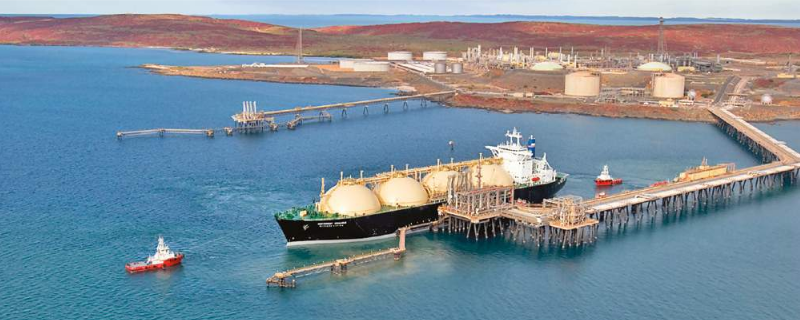
The cargo tank arrangement gave the NWS vessels a greater beam – 47,2 m – than any LNG carrier yet built. The ships’ aluminium cargo tanks are almost 40 m in diameter. The four cargo tank configuration made the ships cheaper to build and repair and easier to operate than a five-tank tank ship.
The same month that Northwest Sanderling departed with the inaugural cargo, the NWS project partners ordered the final two of the seven 125 000 m3 ships needed to service the project. Contracted at the Mitsui and Mitsubishi shipyards, each of the ships cost US $ 200 million. The NWS project ship scheduling called for each LNG carrier to make 14 voyages per year, for a fleet total of 100 voyages per year when all seven vessels were in service from 1993 onwards.
The phased start-up of the NWS project did little to add to global LNG trade levels in 1989 itself. As a result, worldwide movements increased only marginally during the year, to top the 44 mta mark, or about double the 1980 trade volume. Japan had already established its credentials as the world’s leading LNG import nation by 1989, and 69 percent of the LNG moved by sea that year was discharged at Japanese receiving terminals. LNG imports met about 10 percent of the country’s total energy requirements in 1989.
Today the NWS venture remains Australia’s largest hydrocarbons project. Over the past 20 years the original three trains were debottlenecked and two further trains were added at the plant, boosting the total capacity to 16,3 mta. The modular construction techniques used with Train 5 represent a first for the LNG industry. The project also uses pipeline deliveries to meet 65 percent of Western Australia’s gas supply needs.
The expansion work has included the provision of a second jetty, and cargo loadings have climbed to the 200 per annum mark. Exports are now also shipped to long-term customers in China and Korea as well as to buyers around the world on an occasional, spot basis.
The original 20-year contract that the NWS project had with the eight Japanese utilities expired in March 2009. Rather than continue with a similar arrangement, it was left to each individual utility to renegotiate its own follow-up sales contact. The original Japanese buyers adopted a more flexible approach during these contract renewal talks and most finalised medium-term agreements, of 10-12 years duration. In addition, because several renewals are on a free-on-board (FOB) rather than an ex-ship basis, the Japanese utilities are playing a greater role in arranging the shipping requirements than was the case in the past.
